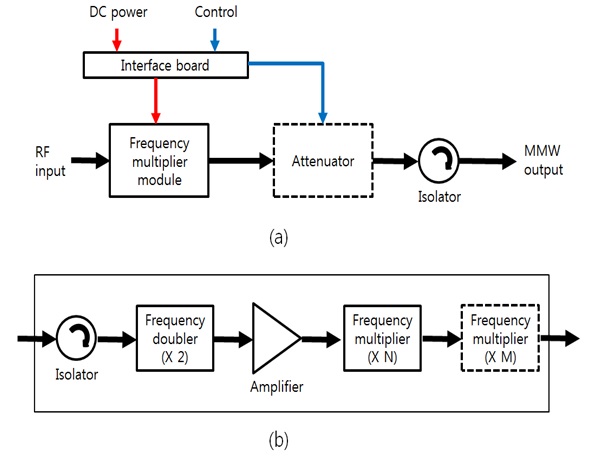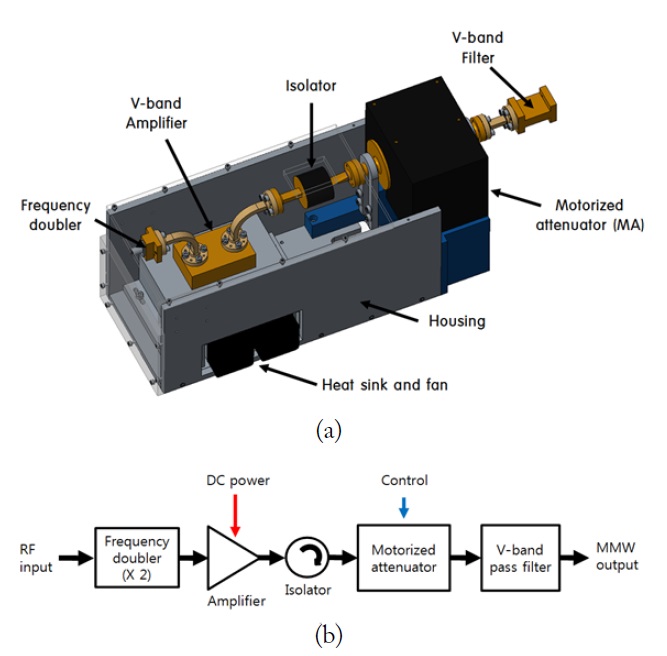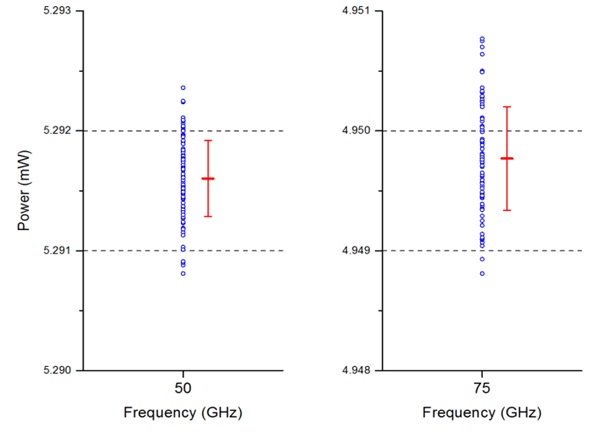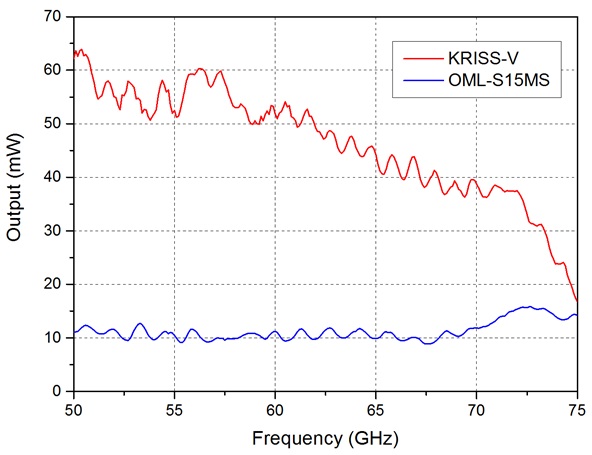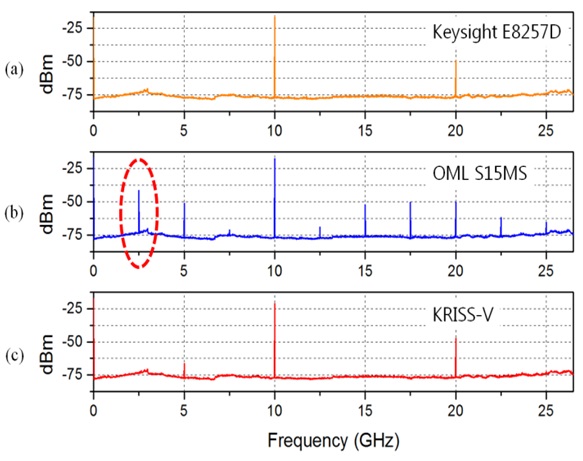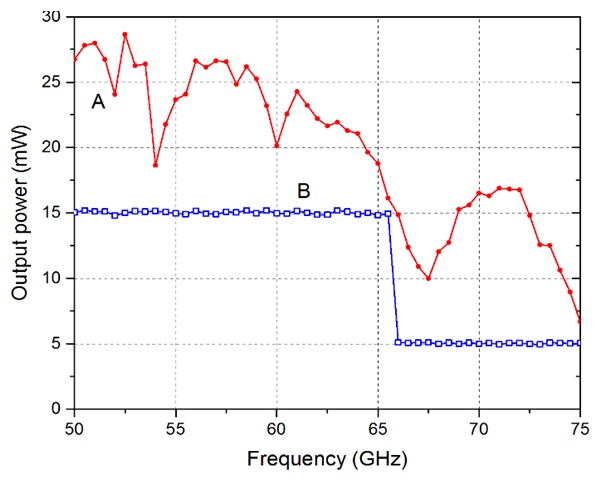



RF/microwave power is one of the most fundamental quantities, along with impedance, attenuation, and noise, in electromagnetic measurement [1]. For RF/microwave power measurement, most National Metrology Institutes (NMIs) rely on a calorimetric measurement scheme due to the difficulties of separately defining the current and voltage of the RF/microwave [2]. The RF power is traceable from a primary standard, which is a microcalorimeter. To link the power traceability to the industry, NMIs usually provide calibration service with a direct comparison power calibration system and microcalorimeter-evaluated transfer standards [3]. Currently, for fifth generation (5G) mobile communication and vehicle radar technology, the mobile communication and automobile industries extend their frequency usage to the millimeter wave.
The Korea Research Institute of Standards and Science (KRISS) has accordingly developed V- and W-band waveguide microcalorimeters to support the growing demands on the millimeter-wave power standards that cover from 50 GHz to 110 GHz [4].
A stable high-power signal source is indispensable for the development of a V-band waveguide primary standard and direct comparison power calibration system. However, limited numbers of commercial signal sources, called frequency multipliers, are available on the market [5, 6]. Furthermore, they often require additional power amplifiers to reach suitable power levels, which degrades their stability and spectral purity. To address this issue, we developed an in-house V-band waveguide signal source (KRISS-V) to ensure a stable high-power signal source for the millimeter-wave power standard system [7].
In general, commercial millimeter-wave source modules consist of an amplifier/multiplier chain (AMC) module, isolators, a control/interface board, and an optional attenuator. Fig. 1 shows a block diagram and the details of an AMC. Millimeterwave signals are generated by the multiplication of driven RF input at a low frequency that is generally less than 18 GHz. The AMCs multiply the driven frequency 4 to 18 times to reach the band of interest. For example, the multiplication factor of an OML S15MS series WR15 Frequency Extension Module is 4, and that of a Rohde & Schwarz SMZ75 is 6.
Fig. 2 illustrates the structure and block diagram of the KRISS in-house V-band waveguide source module. The module consists of a frequency doubler, QuinStar QPM-63052V; a V-band full waveguide band amplifier, QuinStar QPI-V01616; an isolator, Millitech FBI-15-ASEB0; a motorized attenuator (MA), Millitech MWA-15; and a V-band full waveguide band filter, MRI LPFV-1. The housing and heat sink/fan module were custom designed.
A Keysight E8257D PSG was connected as a driving RF input to the V-band source module, and the basic performance was evaluated in the laboratory at 23.0℃ ± 0.5℃ and 45% ± 5 % relative humidity.
The internal automatic leveling control of the PSG was activated, and the signal output was monitored with a thermistor power meter at 50 GHz, 65 GHz, and 75 GHz. The standard deviations of output power were less than 0.01% at the worst case. Fig. 3 shows the output power of KRISS-V for 100 minutes after a 20-minute settling time.
Fig. 4 shows the maximum output power of the KRISS-V without the MA and a commercially available AMC module. Generally, a smaller AMC multiplication factor guarantees higher output power, and commercially available AMCs are usually tuned to a stable output level rather than the maximum output level. Even while sacrificing some power for stability enhancement, the KRISS-V showed more than 6 times the output power of the commercial AMC. The power tends to deteriorate for higher frequencies in the V-band, and the lowest maximum power was 16 mW at 75 GHz.
The spectral purity of the signal sources for the RF power primary standard and the calibration system is crucial for power measurements with low uncertainty. This is because power sensors are usually not frequency selective, thus, they accumulate the entire power of the incoming in-band frequency components, including undesired spectra.
In Fig. 5, the spectra of the commercial AMC (OML S15MS) are compared to KRISS-V. To evaluate the spectral purity, we down-converted the 50 GHz signal of a Keysight E8257D PSG through a sub-harmonic mixer (
The output power of millimeter-wave AMC modules is generally fixed for use, so it is difficult to obtain finely tuned output power without an extra attenuator. Remote output power control is also a necessary function for realizing measurement automation. KRISS-V adopts a remotely controllable and motorized attenuator to obtain fine tuning and automation functions. Fig. 6 shows the remotely controlled output power of KRISS-V.
A V-band millimeter wave source module, KRISS-V, was introduced for the primary RF power standard and calibration system. The controllable output power is superior to that of a commercially available ACM. It also shows excellent stability and spectral purity that are comparable to a single-tone signal generator.
